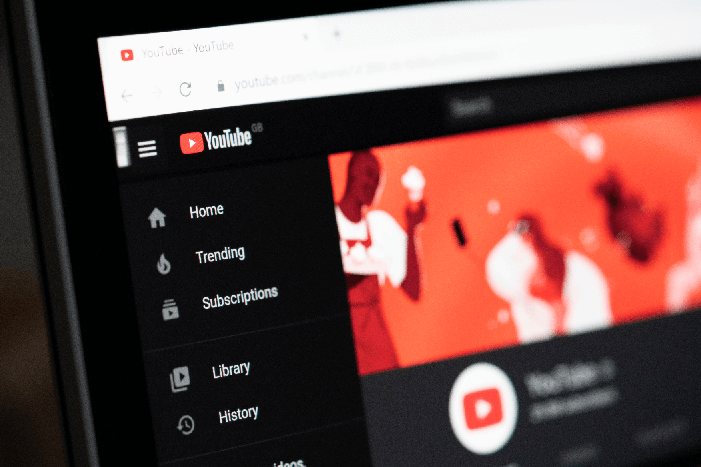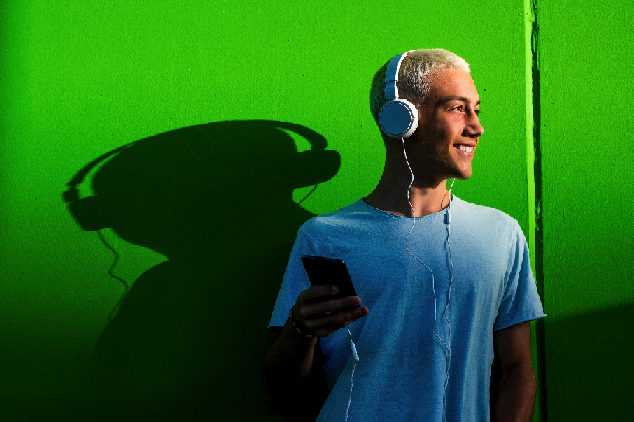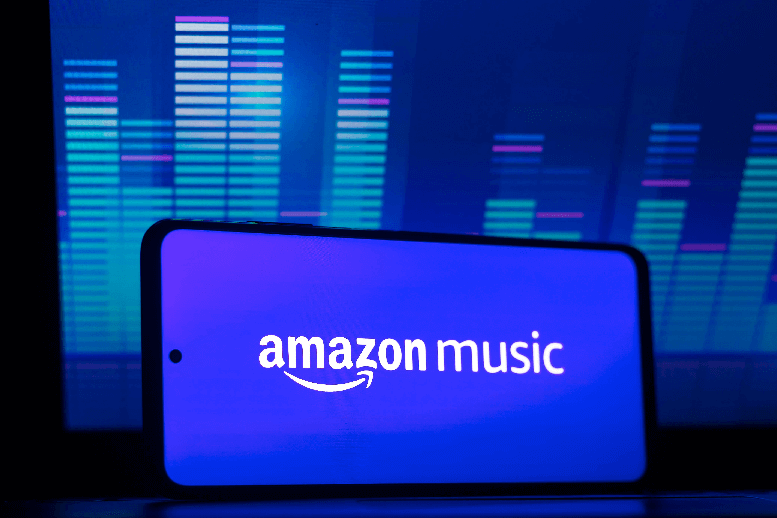The leading belief is that today, artists are in control of their music and how it reaches their fans. While there may be some truth to that, it’s also true that the competition for the attention of those same fans is stronger than ever — and the competition is not limited to other musicians.
People today are bombarded with content from all sides and you have to fight to get in front of them and keep their attention. YouTube boasts over 2 billion logged-in monthly users. That’s why it’s vital to not only be on YouTube but to optimize it for your growth.
Understanding YouTube for Artists
Anybody can start a YouTube channel. There’s a good chance you started a YouTube channel before you began performing. If you’ve been creating engaging content consistently, you might already have a following on your channel because of it. But to get the full benefits of YouTube as a musician, you need to set up an Official Artist Channel, or OAC.
Official Artist Channel (OAC)
Your OAC is the centralized hub for your content, making it easier for fans to find your music, videos, and merchandise. Unlike regular channels, OACs come with enhanced features designed specifically for artists. Features include:
Ticketing
Show your fans where you’re performing. As fans watch your videos, they’ll be able to scroll through your upcoming concert schedule and click through to purchase tickets. The feature works with the following ticketers:
Ticketmaster
AXS
Eventbrite
DICE
SeeTickets
Merch
Once you have an OAC, you can set up your merchandise on a YouTube store and sell right from your channel.
Analytics
Analytics for Artists gives you access to detailed insights for you to understand your audience and the performance of your content. We break down analytics later in this post but know that reviewing this data will help you improve your next video.
How to Request an OAC
In order to qualify for an OAC, you must meet the following requirements:
Own and operate a single artist’s or band’s YouTube channel
Have at least 1 official music release on YouTube that has been delivered and distributed by a music distributor or label
Comply with all YouTube policies
Plus at least one of the following:
Work with a YouTube Partner Manager
Be part of the YouTube Partner Program (“YPP”)
Be part of a label network that works with a YouTube Partner Manager
Your music is distributed by a music partner listed in the YouTube Services Directory for Music Partners
If you meet the criteria, most artists typically go through their label or distributor. If you’re independent, however, you can request an OAC through a Music Service Partner.
SEO Optimization for YouTube
Unless all you care about is existing fans finding your videos, Search Engine Optimization (SEO) is critical to increase visibility on YouTube. Proper SEO techniques ensure your content is discoverable by both existing fans and new listeners.
Titles
Use clear, descriptive titles with relevant keywords. For example, instead of the song title alone, include your name, any featured artists or producers, and perhaps even the genre. For example, “Song Title – [Artist Name] – [Genre].”
Descriptions
The YouTube video description is powerful and it often goes underutilized. This is your opportunity to go into full detail. Use keywords that match what people are searching to find music like yours.
You should also include links to your social media profiles and a call to action for fans to get more involved. This could be to listen to the full album on Spotify, go to your merch page, or perhaps to buy the album on vinyl.
Tags
Tags are usually hidden when you upload a YouTube video. As a result, not everyone uses them. But using the right tags for your name, song, or other searches can sometimes mean the difference between virality and obscurity.
Do people search for your artist name in different ways? Could this song be spelled differently? Use tags to cover those questions and then, add a mix of broad and specific tags relevant to your content to capture a wider audience.
Keyword Tools and Search Trends
If you need help identifying relevant keywords, take advantage of the tools at your reach. Google Trends gives you insights into what people are searching and applications like Ahrefs and Semrush will help you search for keywords related to your genre and style. This helps in crafting content that aligns with listeners’ search habits.
YouTube Analytics
YouTube Analytics provides valuable data about your audience and how your content is performing. Understanding these metrics is crucial for refining content strategy and achieving growth.
Key Metrics to Track
Watch Time: The total amount of time viewers spend watching videos. High watch time signals to YouTube that the content is engaging.
Audience Retention: This is the average percentage a video is being watched. Shows how well videos keep viewers engaged. Aim for a high retention rate to boost video performance.
Demographics: Understand the age, gender, and location of the audience to tailor content accordingly. Knowing who your fans are gives you the ability to tailor future projects to them.
Traffic Sources: Identify where the viewers are coming from, whether it’s YouTube search, external websites, or suggested videos. You’ll be better able to develop marketing campaigns for your music when you understand what is working to get people to your videos.
Using Analytics to Refine Strategy
Review analytics regularly so you can make decisions backed by real data. You may find your listeners tune out after the first chorus or that your audience leans toward the older age groups when you thought you were making music for 20-somethings. With this information, you can refine your songwriting or add merch that appeals to an older audience.
Marketing Tactics and Strategies
When you begin making music, your focus is on putting up content — lots of it. However, once you’re rolling, you have to actively promote your music to get people to your channel. It begins with a content plan.
Creating a Content Plan
Of course, as a musician, music videos will be the bulk of your content. That doesn’t mean it should be 100% of your content. Your content plan should include a variety of content types to keep fans engaged and coming back for more. Today’s fans want to get to know the artists they support.
Behind-the-Scenes Footage: Give people a glimpse of your life and creative process. Bring fans into your studio recording sessions. When you start releasing videos for your latest project, fans will already feel like they’ve been a part of the process.
Live Performances: It’s good to have fans streaming your content but the fans who see you live are also more likely to buy your merch, stream more of your music, and share their live-show experience — giving you free additional exposure. Show them your performances and show them what’s in store for them when they come see you.
Community or Cause: There’s more to you than your music. If you have a cause you strongly believe in, this is your opportunity to bring more attention to it while also inviting people to find your music through your cause. Be careful with this one, as your beliefs could alienate some fans.
Strategies for Increasing Engagement
Here are just a few strategies to begin with to help you drive more engagement.
Thumbnails: Create eye-catching thumbnails that grab your fans’ attention
End Screens: Use end screens to promote other videos, playlists, and encourage subscriptions, or watching you live
Interactive Elements: Use cards and polls to make videos interactive and engaging
YouTube Premieres and Live Streaming: Schedule new video releases and create a live viewing experience to generate excitement and community engagement
Artist Intro: This video can be the video people see first when they reach your channel. You can let them know who you are and how glad you are they’ve found you. And you can make a strong call for them to subscribe to the channel to get all your new music.
Artist Collaboration: Work with other artists who share similar interests or audiences to bring new people to your channel.
Case Studies of Successful Indie Artists
Success in anything requires patience, persistence, and creativity. Follow these steps and your own style to reach your audience. Here are a few artists doing just that.
Jensen McRae (16k subscribers)
McRae first went viral with a cover of a Phoebe Bridgers song but once you hit her channel, you see she’s got more to offer. She goes for a raw, vulnerable approach. You’ll find personal vlogging and fan Q&A sessions on her YouTube channel.
Pinegrove (59k subscribers)
Pinegrove uses their channel to build hype around new videos before releasing them. Their visually stunning trailers excite their fans, add subscriptions, and have led to videos with thousands of views thanks to this tactic.
Grandson (1.2M subscribers)
Diversity in your content keeps people on your channel. And content diversity is what you’ll find when you visit grandson’s YouTube channel. The Toronto artist gives you livestreams, behind the scenes, and podcast episodes to enjoy all in one place.
Monetization Opportunities
YouTube offers several ways for artists to monetize their content:
Ad Revenue: Earn money from ads displayed on videos
Super Chat: Viewers can pay to have their messages highlighted during live streams
Channel Memberships: Offer exclusive perks to subscribers who pay a monthly fee
Working with Brands and Sponsorships
Collaborating with brands can provide additional revenue streams. Collaborations include affiliate programs, integrated videos, and full channel sponsorships. You should always look to partner with brands that align with your image and audience.
YouTube Creators Academy
The YouTube Creators Academy offers video resources to help artists learn about monetization and other aspects of managing their channel. If you’re unsure about your monetization efforts or simply want to stay current on what you can do, it’s a channel you should subscribe to and watch regularly.
Protect Your Content
If it’s true there are more ways than ever to put music out, then there are also more ways for people to use your music without your permission. You have to stay vigilant and protect your music, your channel, and your voice.
YouTube’s Content ID System
Think of Content ID as your music’s digital fingerprint. Your Content ID establishes you as the owner of the music and when others upload content that matches yours, your settings tell YouTube what to do with that user’s content.
You can block the new video outright and the user simply can’t put it up on their channel. This is a useful tool for protecting your intellectual property and ensuring that your music isn’t used without your permission. Blocking can help maintain the exclusivity of your content, ensuring that only authorized channels and platforms can share your music.
You can monetize on that upload and run ads for your original content when people watch the other video. By allowing ads to run on the matched content, you can earn money every time someone views the video — turning others’ uploads into a source of income. This is especially useful if the other video is popular, as it increases the reach and monetization potential of your music.
Finally, you can allow the video to go up while gaining access to that video’s analytics. The data can help you understand the broader impact of your music, identify new fan bases, and help you adjust future marketing strategies. It can also foster goodwill within the YouTube community, as it demonstrates a willingness to share your content while still retaining control over its use.
Legal Considerations and Compliance
In addition to protecting your music, you must protect your channel so that it doesn’t face blocked videos or channel suspensions. You must also abide by YouTube’s copyright policies to avoid any penalties.
Fair Use
Fair use allows you to use portions of copyrighted material under certain conditions. These conditions include:
Commentary
Criticism
News reporting
Teaching
Scholarship
Research
You should know that fair use can be a gray area subject to interpretation. Familiarize yourself with the nuances of fair use and consider consulting legal advice to ensure your content falls within acceptable boundaries.
Sampling
If you use samples from other songs in your music, you must ensure that you have the proper permissions or licenses. Unauthorized sampling can lead to copyright claims, which can result in your videos being blocked. It’s crucial to secure the necessary rights for any third-party content used in your videos to avoid potential legal issues and maintain a good standing with YouTube.
Ownership, Licensing, and Permission
Ensuring you legally own or have licensed all content uploaded to your channel is fundamental. This includes not only the music but also any visuals, graphics, or other multimedia elements. If you use stock footage or images, make sure you have the appropriate licenses. Similarly, if you collaborate with other artists or creators, clear the rights and permissions beforehand.
While we’re on the topic, saying something like, “I don’t own this music” is not the same as having permission or the license to use the music on your channel. The infringement is that you are using it without permission, not that you are claiming it as your own. So simply saying that it doesn’t belong to you, does not absolve you of wrongdoing.
Being proactive about permissions helps stop copyright disputes before they begin and ensures that your channel operates smoothly without interruptions.
YouTube’s Commitment to Responsible AI
Artificial Intelligence (AI) is no longer experimental or a fad. It’s already firmly established in several areas of our lives. In music, AI already assists in distribution, marketing, editing, and to some extent, even in songwriting.
AI has also already been used to duplicate voices in music. Most recently, Drake used it to simulate a Tupac Shakur featured verse on his song. Drake himself was at the other end of it not too long ago and voiced his displeasure with AI’s ability to replicate voices.
YouTube’s use of AI for content moderation and recommendation has its own legal and ethical implications. After all, it’s essentially using AI tools to police the use of AI in content generation.
What’s clear in the argument of AI is that it’s in its nascent stages and regulations around its use will likely change several times and when done in response to events, they will likely change quickly. As artists, you will need to pay attention to these regulations and ensure you use AI constructively and responsibly.
Last Words: How to Grow with YouTube
YouTube offers myriad tools and features that can boost an artist’s career. From SEO optimization and detailed analytics to robust marketing strategies and legal safeguards, leveraging YouTube effectively can lead to increased visibility, fan engagement, and consistent revenue.
At Vortex Entertainment Group, we seek to facilitate an environment of diversity and inclusion, innovation, and transparency that drives the creation of unique immersive experiences as well as helps brands and platforms get the resources needed to best serve the entertainment community. Contact us today and set up an initial consultation to see how we can help you deliver a project you can be proud to call your own.



